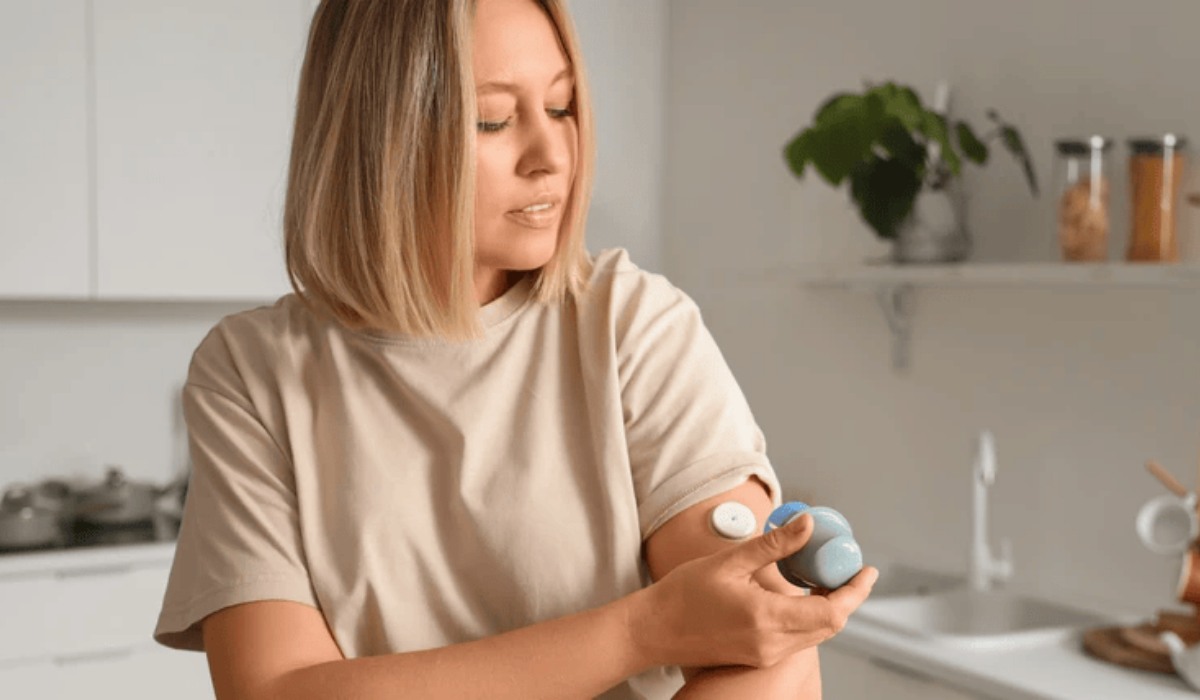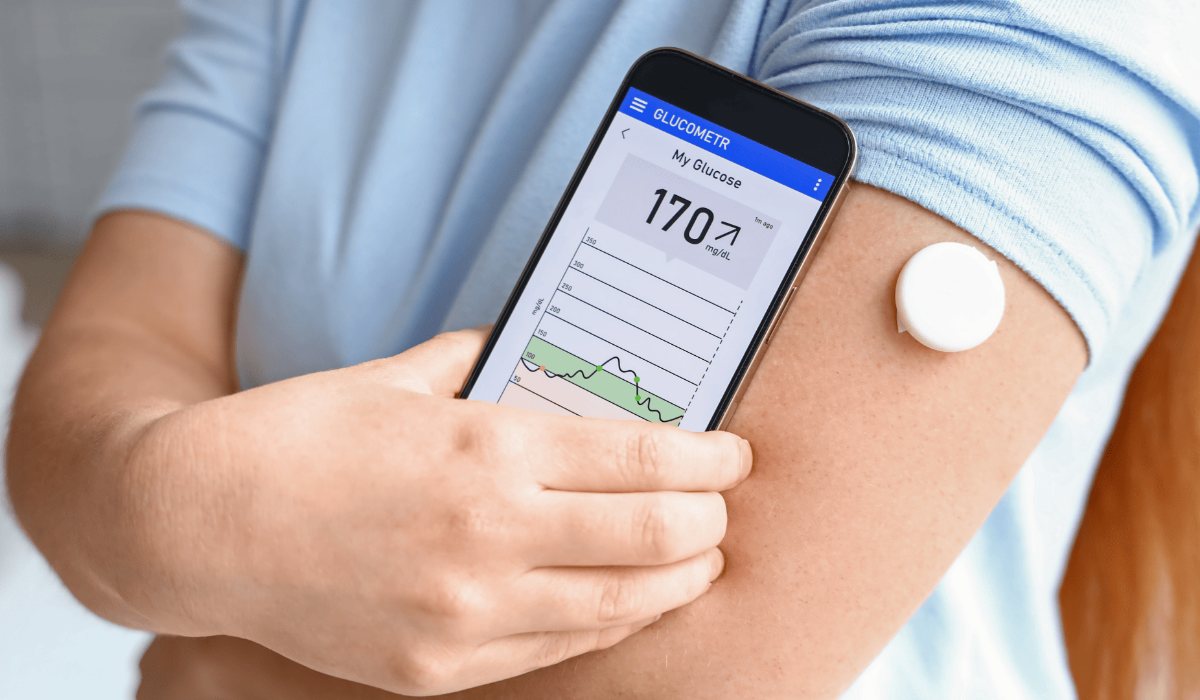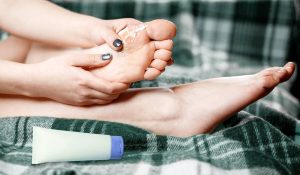
Master Your CGM: Top Tips for Comfort & Results
Are you tired of poking your finger multiple times per day? Are you curious what your blood sugars are doing all day, even overnight? A continuous glucose monitor (CGM) might be for you!
🤔What Does a CGM do?
A continuous glucose monitor (CGM) is a small sensor that you wear on the back of your arm or the abdomen that monitors your blood sugar all day. This can be connected to an app on your smartphone or a handheld receiver to check your blood sugars. Depending on the brand, the sensor will stay placed on your arm or abdomen for 7 or 14 days at a time. Some examples of CGMs include the Freestyle Libre system, Dexcom system, Eversence system and the Medtronic Guardian system.
Advantages of wearing a CGM:
- Viewing the trends of your blood sugar on a graph
- Built-in alarms that will alert you when your blood sugar goes too high or too low
- No more finger pokes multiple times per day (still keep your testing supplies as a backup)
📊Interpreting your Sugar Data
Continuous glucose monitors (CGM) use advanced technology which give you a blood sugar reading every 1-5 minutes. When interpreting your blood sugar numbers, it is important to know a few things. While a finger poke is measuring your blood sugar at the exact time, a CGM will be delayed about 10 – 15 minutes. This is because the CGM is measuring the interstitial fluid which is fluid around your cells in the body. This is still a very accurate measurement of your blood sugar with a slight delay. CGMs will also tell you the direction you are trending with up, down, and horizontal arrows. This allows you to predict your blood sugar and make smart treatment decisions.
💯Tips to keep your CGMs from falling off:
All CGM’s have a powerful adhesive that allows the sensor to remain on your skin for 7-14 days, but some people have trouble with their sensor falling off. Here are some great tips for keeping those sensors sticky!
- Use an overlay patch – This is an adhesive patch that goes on top of your sensor that is slightly larger than the adhesive on the sensor. This will ensure long-wearing protection.
- Skin tac adhesive wipes – Wipe some skin tac on the area you want your sensor, and it will become nice and tacky which creates another layer of reliable adhesion.
- Shave the area – If the area you wear your sensor is hairy, try shaving this area before applying your sensor.
- Wait 12-24 hours before getting wet – Once you have applied your new sensor to clean, dry skin, it is recommended to wait 12-24 hours before getting wet. While most CGMs allow you to shower, swim, and bath as normal, waiting this period of time will ensure the adhesive is properly sticking to your skin.
- Rotate sensor sites – Each time you place a new sensor on your skin, rotate the site to avoid irritated skin. For example, if you just wore a sensor on your right arm, put your next sensor on your left arm!
Summary
Continuous glucose monitors (CGMs) are extremely smart and convenient devices for Type 1 and Type 2 diabetic patients. Not only do CGMs avoid multiple daily finger pokes, they also are equipped with high and low blood sugar alarms, give you the direction your blood sugars are trending, and allows you to see daily patterns of your blood sugars. Additionally, there are lots of tips available for making sure your CGM stays reliably in place. With a variety of different brands and systems, ask your medical provider if a CGM is right for you!







